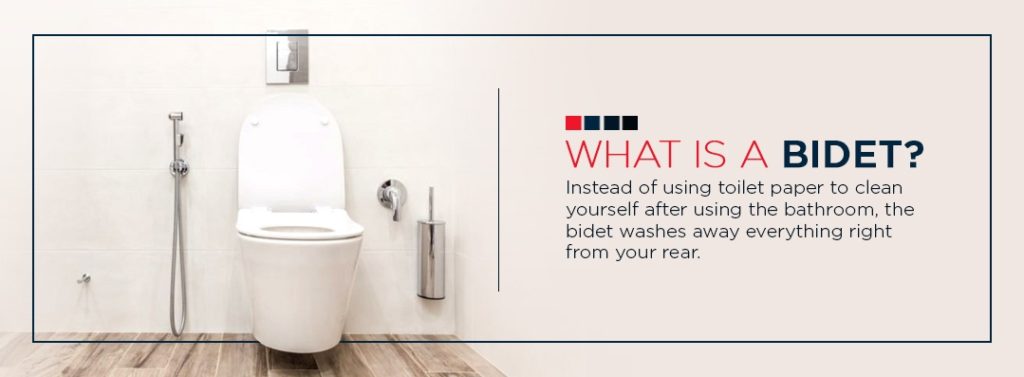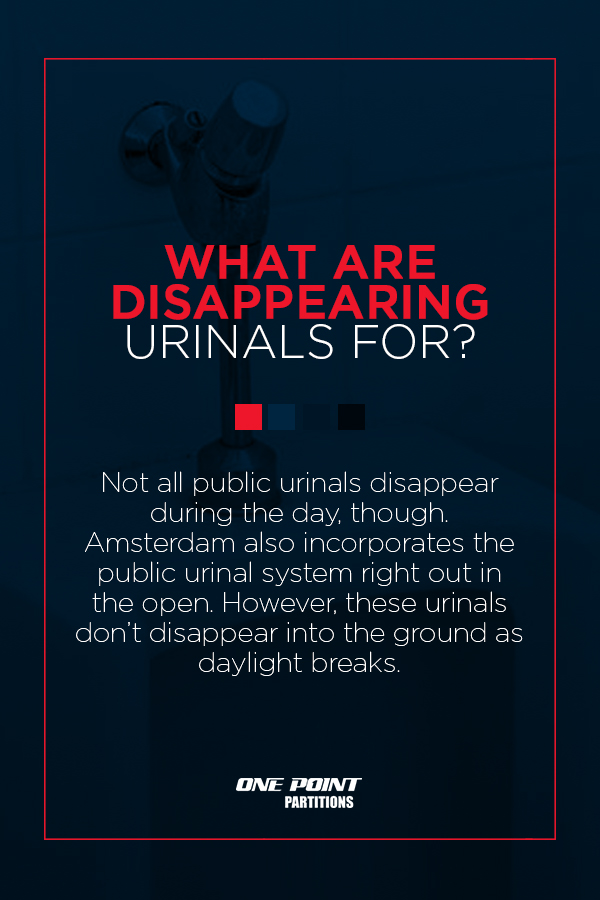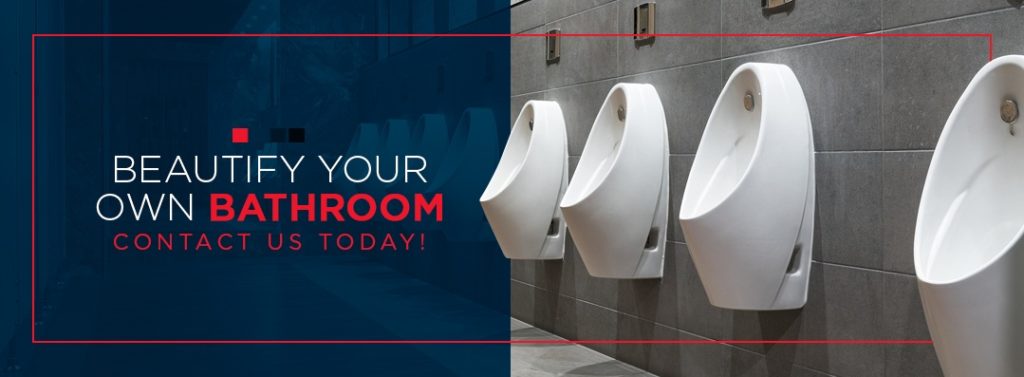Toilets From Around the World
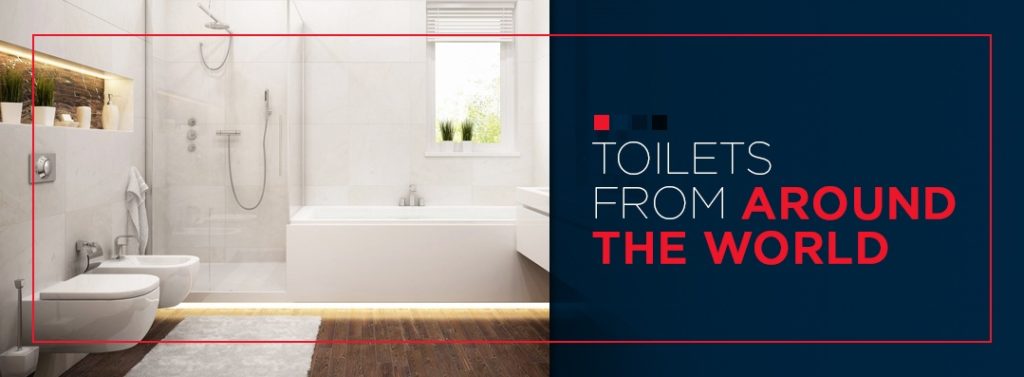
What do toilets look like around the globe? It might not be one of the most pressing questions of the century, but it’s something to ponder when you spend time on your own toilet. Peeking into the stalls of bathrooms in other countries turns up quite the array of toilet styles, some more appealing than others. Let’s take a journey to see what bathrooms look like around the world.
Western-Style Toilets
Before we venture too far from home, let’s cover the basics of your standard, Western-style toilet. Sure, you sit on one every single day, but have you really thought about the specifics that define the style of the toilet in America? While you’ll find some variation in color, size and bowl shape, most toilets in the U.S. have similar designs.
So, what are the common features of Western toilets? They typically come with the following or similar specs:
- Rounded toilet bowel
- Porcelain construction
- White color
- Rimmed edge
- Seat attached to the top of the bowl
- Height about 16 inches off the ground
- Flusher that’s easy to identify
- Toilet paper within reach
While many toilets you encounter abroad may feature a similar design, you’ll also find toilets that are so strange you may not be sure how to use them. Having an understanding of those different bathrooms can help you prepare, should you need to take care of business in a foreign country.
Bathroom Fees
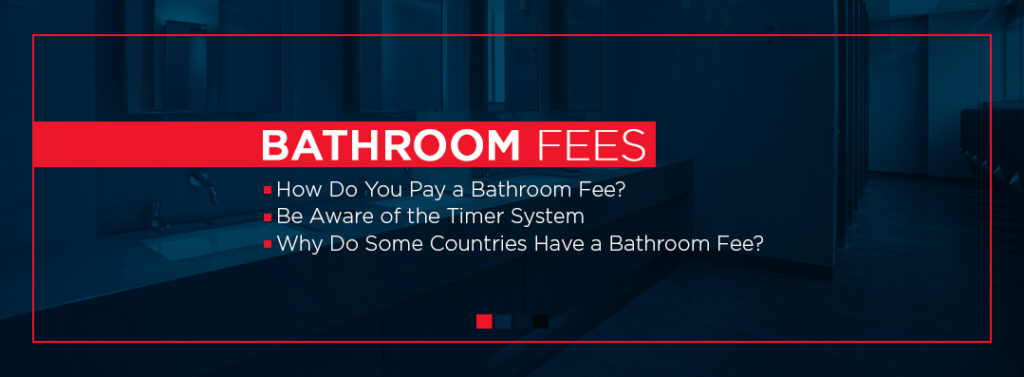
If you’re traveling abroad, it’s always a good idea to have change handy. While you may be used to walking into any public restroom free of charge, that’s not the case in some European countries. In many countries, you may be required to pay a fee to use the restroom.
How Do You Pay a Bathroom Fee?
Many public restrooms require you to deposit change in order to unlock the bathroom stall door. Some countries, like Finland, are a little more-high tech when it comes to bathroom payments. You can pay via text message, so you don’t have to worry about digging around for change when you really have to go.
Be Aware of the Timer System
When the door opens, expect to see a toilet similar to what you would experience in the U.S. Be warned, though: Some of these pay-to-go stalls work on a timer system. Once your time is up, the door unlocks, leaving you potentially exposed. Some of these stalls also have automatic sanitizers, so you may get your bum sanitized if you sit too long.
Why Do Some Countries Have a Bathroom Fee?
Though many Americans find this trend irritating, the coins go toward keeping the bathrooms cleaned and maintained. If all it costs is some spare change to ensure you have access to clean toilets, you’ll likely find the bathroom fee is well worth the price.
Squat Toilets
Everyone has seen their share of not-so-pretty bathrooms, and most women know the “squat over the public toilet seat” trick to avoid coming into contact with who knows what. In many countries, squatting takes on a whole new meaning — as in, it’s the only way to use the toilet.
If you come across one of these squatting toilets, you won’t likely complain about any public restroom you come across in the U.S. ever again. These toilets are made of metal or porcelain and are essentially just a hole in the floor. You squat over the hole to take care of business. They may feature treads on either side of the hole where your feet go. In many cases, you don’t use toilet paper with these toilets, and you’ll either be able to flush the toilet or use a bucket of water. When you’re finished, you’ll clean up with a nearby cup.
Many Americans would be shocked to discover this bathroom setup in several other countries around the world. You can expect to find squatting toilets in several Asian countries, such as India, China, Thailand and Turkey, where they’re sometimes called “Turkish Toilets.”
Here are a few common features of squat toilets you can expect:
Clean Yourself With Water Instead of Toilet Paper
Build up your leg muscles before a trip to countries like India to prepare for squatting over a hole in the floor. These toilets don’t typically include toilet paper, but you may find a bucketful of water next to the hole. The water is used to clean yourself after using the bathroom, in case you were wondering.
Pour the water down your backside, and use your left hand to get clean. If this doesn’t make you long for a dirty truck stop toilet in the U.S., we don’t know what will! It seems strange to us, but to people in many parts of the world, wiping bums with paper seems just as strange and unsanitary.
In countries like Egypt, you’ll likely find a hose for cleaning up after you go instead of a bucket of water. Clean your bum first, then use the hose to clean up the toilet area, so it’s ready for the next person.
Restrooms Without Doors
Be prepared to bare all with anyone else using the restroom in countries like China. Squat toilets usually appear in cubicle-like spaces with no doors. In Tibet, you get even closer to your fellow bathroom patrons, as there are no walls between the squatting toilets.
Raised Squat Toilets
In some countries,you’ll find a combination of traditional sit-down toilets and squatting toilets in the form of a raised squat toilet that has a seat. If you’re heading to Thailand, you’re rolling the dice on whether you find a squatting toilet, a traditional, sit-down toilet or a combination of the two. Choose whether you sit or squat, but we recommend checking the cleanliness first if you choose the sitting option.
Fortunately for American travelers, Western-style toilets are becoming more popular in Asian cities. In China, for example, the “toilet revolution” is targeting many popular tourist sites to improve the quality and cleanliness of public restrooms. Japan is also looking to swap out its squat toilets in popular cities like Tokyo to attract more tourists.
Popularity of Bidets
If you’ve ever traveled to France, Italy, Japan, Portugal, Venezuela or Argentina, you’ve likely seen a bidet.
What Is a Bidet?
Instead of using toilet paper to clean yourself after using the bathroom, the bidet washes away everything right from your rear. The bidet looks similar to a Western toilet, but it features an extra nozzle that squirts water right where you need it. Lean forward, and let the toilet do the dirty work for you!
You may also find a bidet in the form of a separate fixture with water controls or as a separate sprayer and hose beside the toilet. In Thailand, for example, you’ll typically find a hose beside the toilet to use for cleaning.
Why Use Water Instead of Toilet Paper?
It may seem strange to use water to clean up after using the toilet, but in many countries, the water method is essential due to the limited availability of disposable paper products, like toilet paper. Some societies choose water over paper for better cleaning. Still, others rely on a water cleaning system to keep plumbing systems functioning properly. Though the bidet hasn’t become as popular in the U.S., many nations believe using water to clean the body is more sanitary and less wasteful.
Can You Still Use Toilet Paper?
Keep this in mind when you travel: Exercise caution when using toilet paper in other countries. Bringing your own toilet paper and flushing it down the toilet can cause clogged pipes and wreak havoc on the local plumbing and sewer system.
High-Tech Toilets
Users of squat toilets may be shocked to discover high-tech toilets in certain parts of the world. In China and Japan, for example, you may find high-tech toilets that make using the restroom a luxury experience.
What Are High-Tech Toilets?
While some restrooms in these countries use a simple, squat-style toilet, other toilets in popular cities go all-out with luxury features you won’t believe. These toilets resemble the Western style, but they incorporate some pretty amazing features. A few of the options that you’ll find on various models include:
- Body scans
- Seat warmers
- Remote-control seats
- Armrests
- Automatic bidets
- Dryers
- Music to mask bathroom sounds
Where Can You Find High-Tech Toilets?
These high-tech toilets are becoming more commonplace in public restrooms due to the “toilet revolution.” In a Japanese airport, you may find a bidet featuring a heated seat or a toilet roll nearby to wipe your smartphone. Toilets are no longer simply about functionality — they’re about comfort and convenience. Everyone has to use the restroom, so why not make the experience more enjoyable with high-tech toilets?
High-tech toilets may also be found in private homes, so if you make friends on your next trip to Japan, you’ll probably get to enjoy one of these luxury toilets. We’re tempted to special-order one of these for our own bathrooms!
Street Toilet Trend
Ever heard of a street toilet? They’re currently making a comeback in cities like Montreal, San Francisco and Paris.
What Are Street Toilets?
In places like Paris, these public bathrooms are located inside small gray structures on the sidewalk, complete with a toilet and running water to clean your hands — and this trend is spreading to other cities across the world.
What Is the Purpose of Street Toilets?
Street toilets offer convenience to anyone walking down the street who needs to make a pit stop. These facilities can also be used by the homeless population who don’t have access to their own bathroom.
What Can You Expect From a Street Toilet?
You’ll find all of the conveniences of a typical restroom from street toilets. Places like Montreal boast some self-cleaning street toilets, while cities like San Francisco have created street toilets with modern, sleek designs. A street toilet isn’t simply an outhouse in the middle of the street — it’s designed to be both convenient and clean for every user.
Inspection Toilets
In countries like Germany, you may encounter inspection toilets.
What Is an Inspection Toilet?
From a distance, these toilets look similar to what you’re used to seeing at home. But upon closer inspection, you’ll notice the inside of the bowl looks a lot different. Instead of being in the middle or toward the back, the hole is at the front of the bowl. Even more peculiar, the bowl only has a small amount of water surrounding that front hole. This design differs greatly from the standard Western-style toilet.
Why Are They Called Inspection Toilets?
The back portion of the bowl features a platform with no water covering it. Why? This design lets you inspect your deposit before you flush it away. It sounds strange to us, but we won’t judge. When you flush, it pushes everything down the hole. Beware the potential for splashing, though, when urine hits the platform.
Self-Cleaning Toilets
Scrubbing the toilet is by far one of the worst chores, but the French took care of that particular annoyance with public restroom stalls that clean themselves.
What Are Self-Cleaning Toilets?
The name speaks for itself. These very special toilets typically appear in a single stall, right along the street. They look a bit like a futuristic pod with lights to indicate if the bathroom is in use, in self-cleaning mode or out of order. After someone uses the facilities, the toilet rotates back into the wall, where it gets disinfected for the next user.
What Is the Purpose of Self-Cleaning Toilets?
A self-cleaning toilet keeps toilet use convenient and sanitary for users. With self-cleaning toilets, public toilets stay clean without someone constantly grabbing a toilet brush. You’ll feel a lot more comfortable taking a seat on these public toilets knowing they were just freshly sanitized before your turn.
Disappearing Urinals
Now you see it, now you don’t! If you wander around certain parts of London and other European cities at night, you may notice a tall, cylinder-shaped structure along the street.
What Is a Disappearing Urinal?
Keep a safe distance from this structure — unless you need to relieve yourself — because it’s actually a urinal. These “urilift” urinal stations rise out of the ground only at night. You won’t get any privacy if you decide to use them, though — the urinals are out in the open, with no doors or other types of privacy. But if you were planning on peeing on a building anyway, chances are you won’t mind using a urinal that’s out in the open.
Wander down those same streets during the day, and you may wonder if you imagined things the night before. The nighttime urinals lower back down into the ground when morning arrives, allowing people to walk right over them.
What Are Disappearing Urinals For?
These urinals are designed to keep drunk men from urinating on the streets, buildings and other places. If they’re going to be urinating in public, they might as well have a designated space to take care of business that won’t present a sanitation problem for public buildings and streets.
Not all public urinals disappear during the day, though. Amsterdam also incorporates the public urinal system right out in the open. However, these urinals don’t disappear into the ground as daylight breaks. Instead, brave users can pee in the urinals 24 hours a day, even in broad daylight. The goal is the same as the London version: To keep drunk people from urinating all around the city.
Toilet Etiquette
You may know the basic etiquette rules of using public restrooms in the U.S., but are you up-to-date on the unspoken rules of bathroom use in other countries? Check out these tips for toilet etiquette around the world to avoid offending someone:
- Left hand only:In many countries, the plumbing system or the type of toilet doesn’t allow for toilet paper. In some of those countries, only the left hand is used for toileting purposes. This is because the right hand is reserved for greetings or for eating. Some countries with this left hand-only rule include Morocco, Iran and India.
- Leave a gap:In places like the U.K., proper etiquette is to leave at least one urinal between you and someone else using the restroom. In other words, don’t saunter up to a urinal right next to someone who’s already taking care of business.
- Bring your own toilet paper:In many countries, don’t expect to find toilet paper in the restrooms. The custom is to bring your own toilet paper when nature calls.
- Look for a wastebasket: If you see a wastebasket right next to the toilet, take it as a sign that you shouldn’t flush any toilet paper. The basket is likely for all of your used toilet paper. Many plumbing systems simply can’t handle toilet paper.
- Wear slippers in Japan:Japanese bathrooms often have slippers used only while in the bathroom. This protects your feet while in the bathroom, without tracking germs to the rest of the house. Take off your house slippers outside the bathroom, put on the bathroom slippers to handle your business and then change back into the house slippers when you’re done.
- Limit touching: No matter how dirty you think public restrooms are here — and trust us, we’ve seen our share of nasty bathrooms —the toilets in some countries are very smelly and full of bacteria and germs. Don’t touch any more surfaces than absolutely necessary. Always wash your hands afterward. It also doesn’t hurt to keep a bottle of hand sanitizer with you just to be safe.
Beautify Your Own Bathroom
While these different toilets from around the globe are interesting, privacy is still an important part of commercial bathroom design. Whether you have standard American toilets or something a little more interesting from across the ocean, quality partitions are essential. Your patrons will thank you! Check out our partition products to find the best materials and stall setups for your restroom needs.
Contact One Point Partitions for a free quote today.

